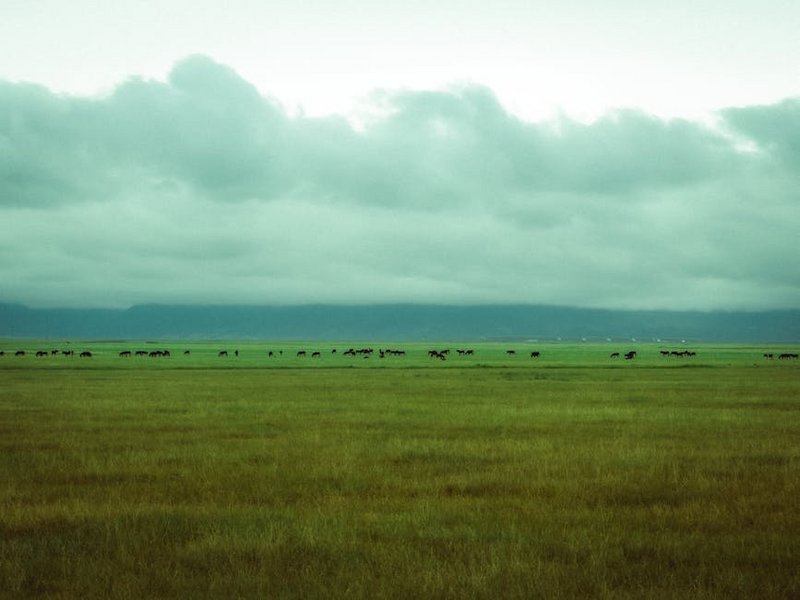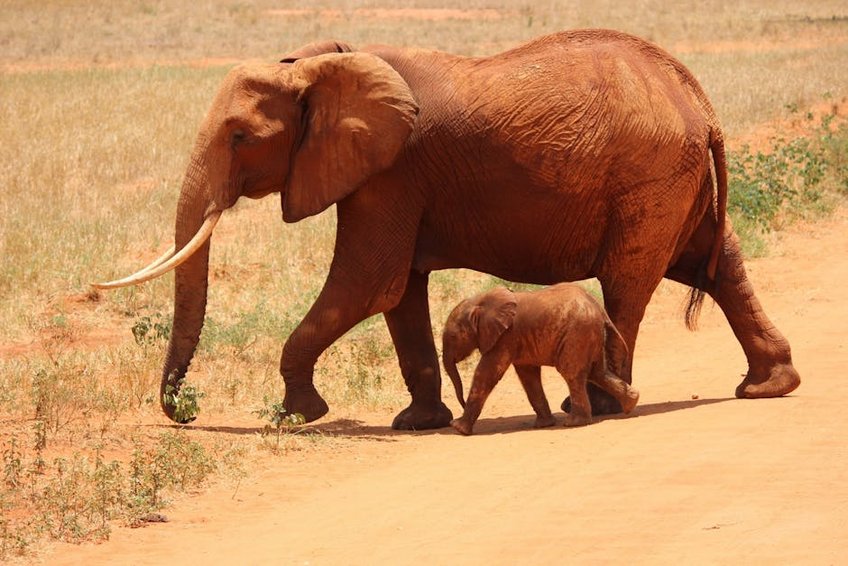Tanzania Serengeti Safari: Your Ultimate Guide to the African Wilderness
Embarking on a Tanzania Serengeti safari represents one of the most extraordinary wildlife experiences our planet offers. This vast ecosystem, spanning over 30,000 square kilometers, provides the backdrop for the Great Migration, where millions of wildebeest, zebras, and gazelles traverse the plains in a perpetual search for fresh grazing. You’ll witness raw nature unfold before your eyes, from predator-prey interactions to breathtaking sunsets that paint the acacia-dotted landscape in golden hues. The Serengeti’s name derives from the Maasai word “Siringet,” meaning “endless plains,” and you’ll quickly understand this poetic description as you explore its seemingly infinite horizons. Whether you’re a first-time safari-goer or seasoned wildlife enthusiast, this Tanzania Serengeti safari adventure promises to redefine your understanding of natural wonder and leave you with memories that will last a lifetime.
Tanzania Serengeti Safari Essential Information
Before setting off on your Tanzania Serengeti safari, understanding the fundamentals will significantly enhance your experience. The Serengeti National Park forms the core of a larger ecosystem that includes several protected areas, each offering distinct landscapes and wildlife viewing opportunities. The park operates under Tanzania National Parks Authority (TANAPA), with entry fees contributing to conservation efforts. You’ll need to consider vaccination requirements, travel insurance, and appropriate documentation well in advance. Most visitors require a visa, which citizens of the US, UK, Canada, and EU can obtain on arrival or through Tanzania’s electronic visa system. The dry season (June-October) offers optimal wildlife viewing, though the wet season (November-May) brings lush landscapes and newborn animals. Your Tanzania Serengeti safari experience will vary dramatically depending on when you visit, where you stay, and how you choose to explore this magnificent wilderness.
Park Zones and Regions – What You Need to Know
- Seronera Valley: The central region known as “Serengeti’s center” offers year-round game viewing with high predator density and accessible roads
- Western Corridor: Home to the Grumeti River where dramatic river crossings occur during migration (May-July)
- Northern Serengeti: The Mara River region provides spectacular crossing views from July through October
- Southern Plains: Where the calving season occurs from December to March, featuring thousands of newborns
- Budget camping safari: $250-350 per day including park fees, basic accommodation, and shared vehicle
- Mid-range lodge safari: $500-800 per day offering comfortable lodges, better vehicles, and experienced guides
- Luxury safari experience: $1,000-2,000+ per day featuring premium lodges, private guides, and exclusive activities
- Tanzania National Parks Authority – Serengeti Official Information
- Serengeti Official Tourism Portal
- Tanzania Tourist Board Official Site
Conservation and Park Regulations – Key Details
Understanding conservation efforts enhances appreciation for your Tanzania Serengeti safari experience. The park operates strict guidelines to protect both wildlife and visitors. Off-road driving is generally prohibited except in specific areas with special permission. Night drives require special arrangements with licensed operators. Drone usage is completely banned without governmental authorization. Plastic bottle restrictions are increasingly enforced, with many camps providing filtered water refill stations. Your park fees directly support anti-poaching units, community outreach programs, and habitat preservation. The Serengeti remains one of Africa’s most successfully managed ecosystems, maintaining ecological balance while allowing sustainable tourism. During your visit, you’ll notice how carefully managed tourism operations minimize environmental impact while maximizing your wildlife encounters.

Tanzania Serengeti Safari Planning Your Trip
Planning your Tanzania Serengeti safari requires careful consideration of timing, budget, and travel style. The experience can range from rugged camping adventures to ultra-luxurious lodge stays, with prices varying accordingly. Most visitors combine the Serengeti with other northern circuit destinations like Ngorongoro Crater, Tarangire, and Lake Manyara, creating a comprehensive Tanzanian safari experience. You’ll need to decide between guided group tours, private safaris, or self-drive options (though the latter requires significant experience and preparation). Booking typically should occur 6-12 months in advance for peak season, especially if targeting specific migration events or premium accommodations. Travel insurance that covers emergency evacuation is absolutely essential, as medical facilities within the park are limited to basic first aid. Your Tanzania Serengeti safari represents a significant investment, but proper planning ensures an experience that exceeds expectations.
Best Time to Visit Serengeti National Park
Timing your Tanzania Serengeti safari correctly dramatically affects what you’ll experience. The dry season (June-October) offers prime wildlife viewing as animals congregate around water sources, with vegetation thinning out for better visibility. This period coincides with the dramatic Mara River crossings in the north. The wet season (November-May) transforms the landscape into lush greenery, with January-February featuring the calving season in the southern plains—an incredible spectacle of birth and predation. April and May see heavy rains, making some roads impassable but offering significantly lower rates and fewer visitors. For general wildlife viewing, September-October provides ideal conditions, while February-March delivers the emotional intensity of newborn animals. Ultimately, there’s no wrong time for a Tanzania Serengeti safari, as each season presents unique wonders.
Budget Planning and Costs
Essential Preparation Checklist
Preparing adequately for your Tanzania Serengeti safari ensures comfort and enjoyment throughout your adventure. Begin with medical preparations—yellow fever vaccination is required, while malaria prophylaxis is strongly recommended. Pack neutral-colored clothing (khaki, green, beige) to blend with the environment and avoid disturbing wildlife. Quality binoculars are arguably more important than camera equipment for proper wildlife observation. The temperature range can be extreme, from chilly morning game drives to hot afternoons, so layered clothing is essential. Don’t forget power banks and adapters (UK-style plugs, 230V), as electricity may be limited in remote camps. Finally, manage expectations—wildlife viewing depends on nature’s schedule, not yours. Patience often rewards Tanzania Serengeti safari participants with the most magical encounters.
Tanzania Serengeti Safari Top Attractions and Activities
Your Tanzania Serengeti safari offers far more than passive wildlife observation. Beyond the legendary Great Migration, you can experience hot air balloon safaris at dawn, walking safaris with armed guides, and cultural visits to Maasai villages. The Seronera River Valley serves as the park’s biological heart, where leopard sightings occur with remarkable frequency. Retina Hippo Pool hosts hundreds of hippos in a relatively small area, while Moru Kopjes provides fascinating geological formations and ancient rock art. Night drives in designated areas reveal a completely different ecosystem of nocturnal creatures. For photography enthusiasts, the golden light of sunrise and sunset transforms the landscape into a photographer’s paradise. Your Tanzania Serengeti safari activities should be balanced between scheduled game drives and moments simply absorbing the atmosphere of this ancient wilderness.
Must-See Highlights
Certain experiences define the ultimate Tanzania Serengeti safari adventure. Witnessing the Great Migration—particularly river crossings where crocodiles await—ranks as perhaps Africa’s greatest wildlife spectacle. The Simba Kopjes (Lion Rocks) provide perfect vantage points for observing prides in their natural habitat. Balloon safaris over the plains at sunrise offer breathtaking perspectives unavailable from ground level. Visiting a Maasai boma (homestead) provides cultural context to the region’s human-wildlife coexistence. The Gol Mountains and Nasera Rock offer hiking opportunities with panoramic views. For bird enthusiasts, over 500 species inhabit the ecosystem, including endemic species like the grey-breasted spurfowl. Each of these Tanzania Serengeti safari highlights contributes to creating a comprehensive understanding of this complex ecosystem.
Hidden Gems and Local Favorites
Beyond the famous landmarks, your Tanzania Serengeti safari can include lesser-known treasures that provide intimate experiences away from crowds. The Ngare Nanyuki River in the remote north offers stunning forest walks with elephant sightings. Makoma Hill provides spectacular sunset views rarely visited by standard safari routes. The western corridor’s Turner Springs features natural pools that attract wildlife during dry periods. Local guides often know specific kopjes (rock formations) that serve as regular cheetah observation points. Some camps offer sleep-out platforms where you can spend the night under the stars with only a mosquito net between you and the sounds of the wilderness. These Tanzania Serengeti safari hidden gems require either special guide knowledge or willingness to explore beyond the main circuits, but reward with unparalleled solitude and connection to nature.
Tanzania Serengeti Safari Practical Travel Information
Navigating the practical aspects of your Tanzania Serengeti safari ensures smooth travels from arrival to departure. Most international visitors fly into Kilimanjaro International Airport (JRO) or Julius Nyerere International Airport (DAR) in Dar es Salaam. From there, regional flights connect to various Serengeti airstrips, or you can undertake a scenic drive through the northern circuit. Road transfers can be lengthy but offer cultural insights into Tanzanian life outside park boundaries. Within the park, 4×4 vehicles are mandatory, and most visitors travel with experienced driver-guides who navigate the sometimes challenging terrain. Accommodation ranges from permanent lodges to seasonal tented camps that move according to migration patterns. Communication can be limited—many camps have radio contact rather than internet, allowing proper disconnection from the digital world during your Tanzania Serengeti safari immersion.
| Category | Options/Features | Price Range (USD) |
|---|---|---|
| Regional Flights | Coastal Aviation, Auric Air from Arusha to Serengeti airstrips | $250-400 per person one-way |
| Park Fees | Adult foreign national entry fee per 24 hours | $70 per person per day |
| Vehicle Fees | 4×4 safari vehicle entry fee per day | $40 per vehicle per day |
| Accommodation | Budget camping to luxury lodges per night | $50-1,500 per person |


